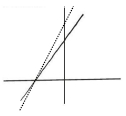Open Question
Indicate with an 'x' which of the kinetic parameters would be altered in the presence of the given inhibitor.

 Verified step by step guidance
Verified step by step guidance
 3:59m
3:59mMaster Noncompetitive Inhibition with a bite sized video explanation from Jason
Start learning
